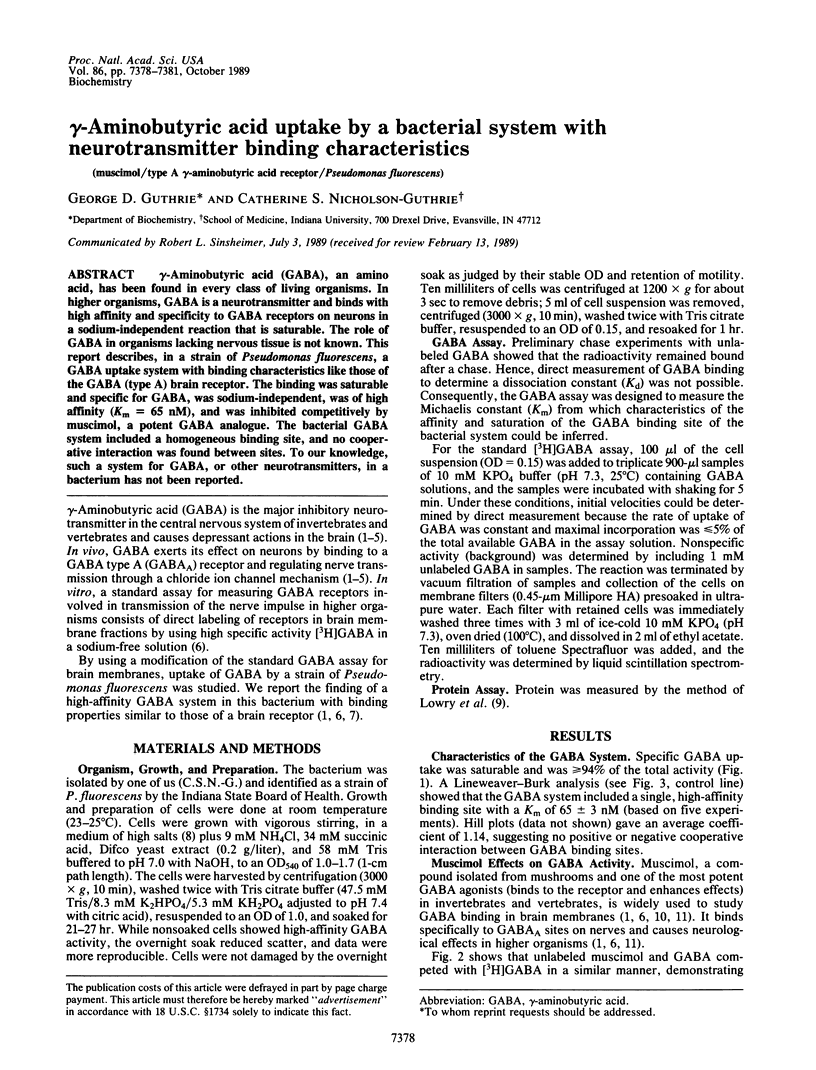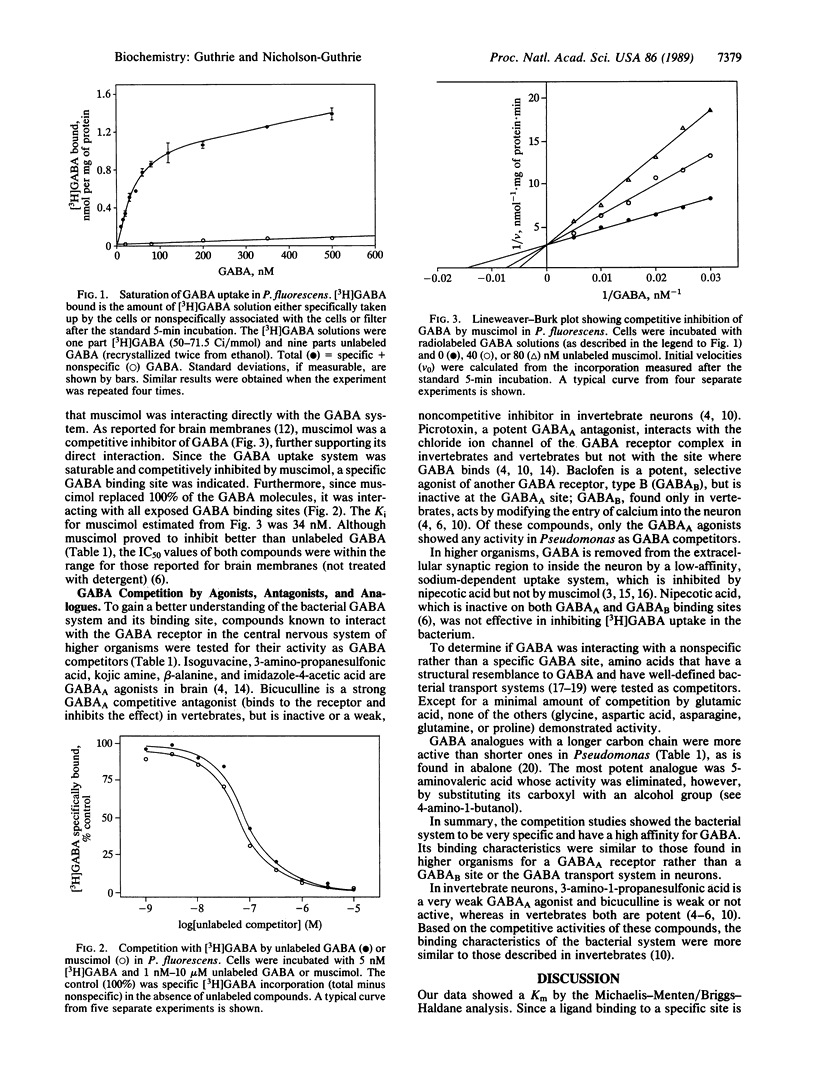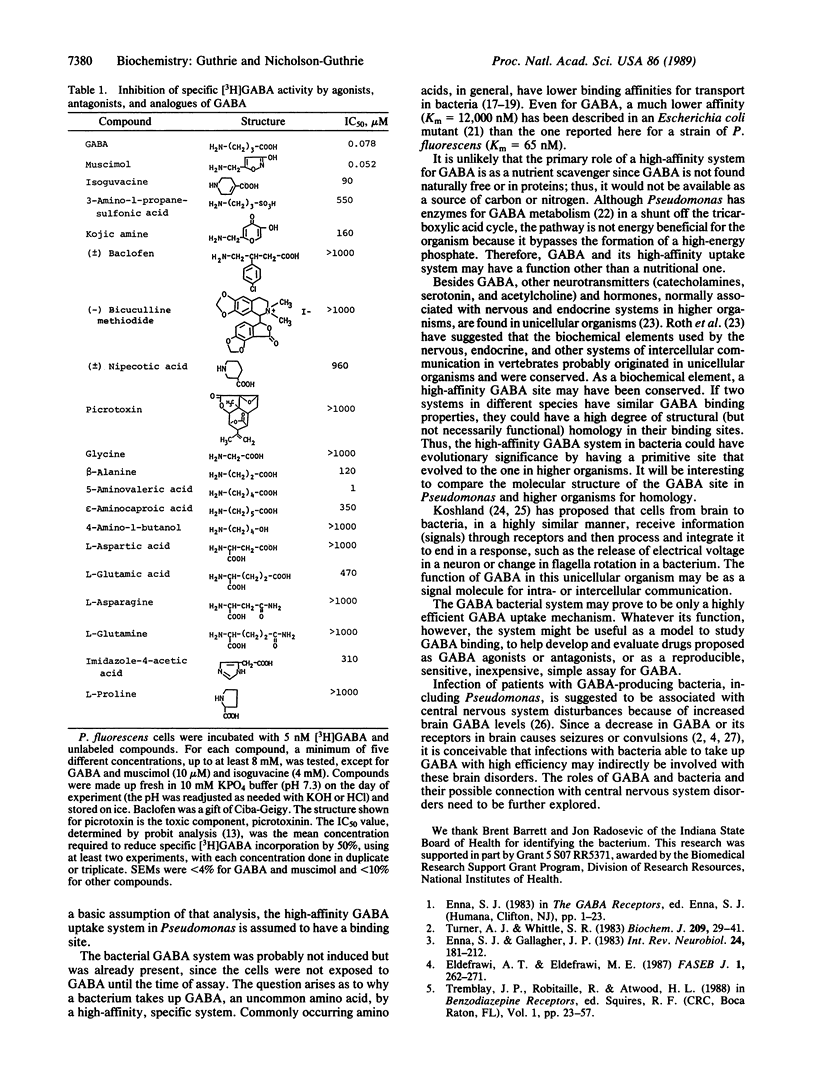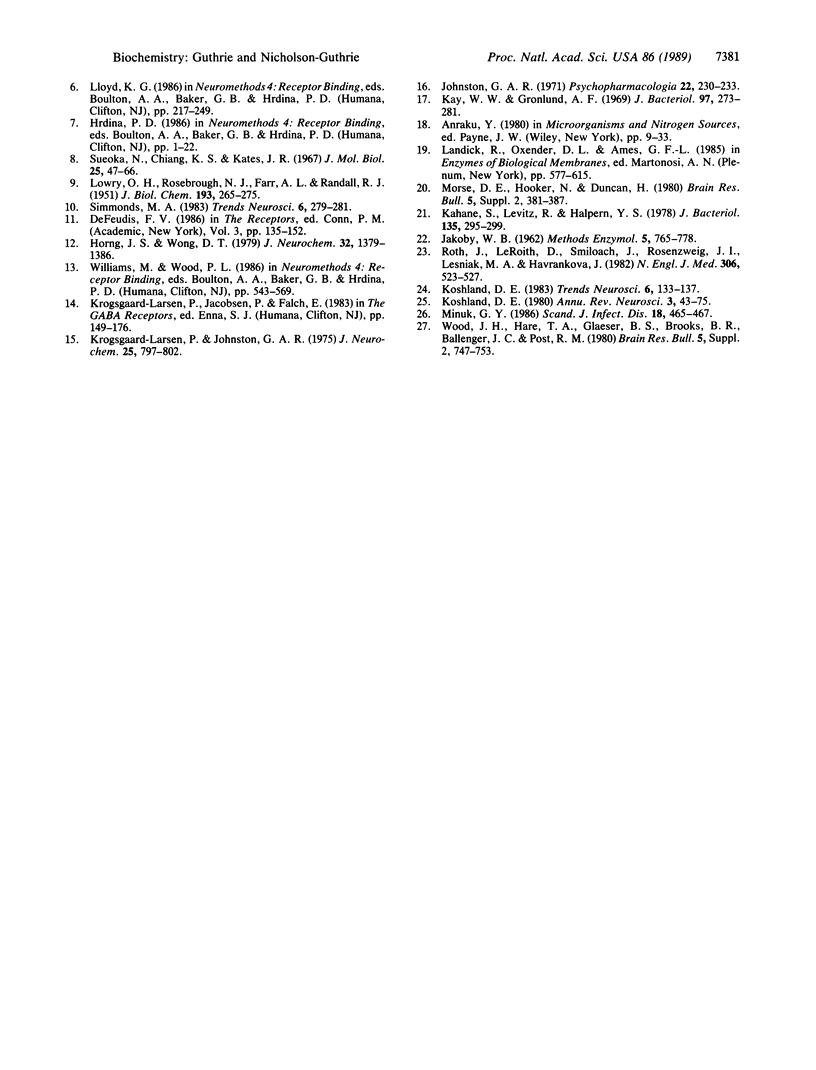Abstract
gamma-Aminobutyric acid (GABA), an amino acid, has been found in every class of living organisms. In higher organisms, GABA is a neurotransmitter and binds with high affinity and specificity to GABA receptors on neurons in a sodium-independent reaction that is saturable. The role of GABA in organisms lacking nervous tissue is not known. This report describes, in a strain of Pseudomonas fluorescens, a GABA uptake system with binding characteristics like those of the GABA (type A) brain receptor. The binding was saturable and specific for GABA, was sodium-independent, was of high affinity (Km = 65 nM), and was inhibited competitively by muscimol, a potent GABA analogue. The bacterial GABA system included a homogeneous binding site, and no cooperative interaction was found between sites. To our knowledge, such a system for GABA, or other neurotransmitters, in a bacterium has not been reported.
Full text
PDF



Selected References
These references are in PubMed. This may not be the complete list of references from this article.
- Eldefrawi A. T., Eldefrawi M. E. Receptors for gamma-aminobutyric acid and voltage-dependent chloride channels as targets for drugs and toxicants. FASEB J. 1987 Oct;1(4):262–271. doi: 10.1096/fasebj.1.4.2443413. [DOI] [PubMed] [Google Scholar]
- Enna S. J., Gallagher J. P. Biochemical and electrophysiological characteristics of mammalian GABA receptors. Int Rev Neurobiol. 1983;24:181–212. doi: 10.1016/s0074-7742(08)60222-6. [DOI] [PubMed] [Google Scholar]
- Horng J. S., Wong D. T. gamma-Aminobutyric acid receptors in cerebellar membranes of rat brain after a treatment with Triton X-100. J Neurochem. 1979 May;32(5):1379–1386. doi: 10.1111/j.1471-4159.1979.tb11075.x. [DOI] [PubMed] [Google Scholar]
- Johnston G. A. Muscimol and the uptake of -aminobutyric acid by rat brain slices. Psychopharmacologia. 1971;22(3):230–233. doi: 10.1007/BF00401785. [DOI] [PubMed] [Google Scholar]
- Kahane S., Levitz R., Halpern Y. S. Specificity and regulation of gamma-aminobutyrate transport in Escherichia coli. J Bacteriol. 1978 Aug;135(2):295–299. doi: 10.1128/jb.135.2.295-299.1978. [DOI] [PMC free article] [PubMed] [Google Scholar]
- Kay W. W., Gronlund A. F. Amino acid transport in Pseudomonas aeruginosa. J Bacteriol. 1969 Jan;97(1):273–281. doi: 10.1128/jb.97.1.273-281.1969. [DOI] [PMC free article] [PubMed] [Google Scholar]
- Koshland D. E., Jr Bacterial chemotaxis in relation to neurobiology. Annu Rev Neurosci. 1980;3:43–75. doi: 10.1146/annurev.ne.03.030180.000355. [DOI] [PubMed] [Google Scholar]
- Krogsgaard-Larsen P., Johnston G. A. Inhibition of GABA uptake in rat brain slices by nipecotic acid, various isoxazoles and related compounds. J Neurochem. 1975 Dec;25(6):797–802. doi: 10.1111/j.1471-4159.1975.tb04410.x. [DOI] [PubMed] [Google Scholar]
- LOWRY O. H., ROSEBROUGH N. J., FARR A. L., RANDALL R. J. Protein measurement with the Folin phenol reagent. J Biol Chem. 1951 Nov;193(1):265–275. [PubMed] [Google Scholar]
- Minuk G. Y. Gamma-aminobutyric acid (GABA) production by eight common bacterial pathogens. Scand J Infect Dis. 1986;18(5):465–467. doi: 10.3109/00365548609032366. [DOI] [PubMed] [Google Scholar]
- Roth J., LeRoith D., Shiloach J., Rosenzweig J. L., Lesniak M. A., Havrankova J. The evolutionary origins of hormones, neurotransmitters, and other extracellular chemical messengers: implications for mammalian biology. N Engl J Med. 1982 Mar 4;306(9):523–527. doi: 10.1056/NEJM198203043060907. [DOI] [PubMed] [Google Scholar]
- Sueoka N., Chiang K. S., Kates J. R. Deoxyribonucleic acid replication in meiosis of Chlamydomonas reinhardi. I. Isotopic transfer experiments with a strain producing eight zoospores. J Mol Biol. 1967 Apr 14;25(1):47–66. doi: 10.1016/0022-2836(67)90278-1. [DOI] [PubMed] [Google Scholar]
- Turner A. J., Whittle S. R. Biochemical dissection of the gamma-aminobutyrate synapse. Biochem J. 1983 Jan 1;209(1):29–41. doi: 10.1042/bj2090029. [DOI] [PMC free article] [PubMed] [Google Scholar]


